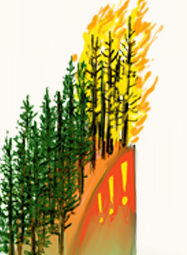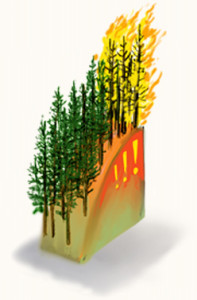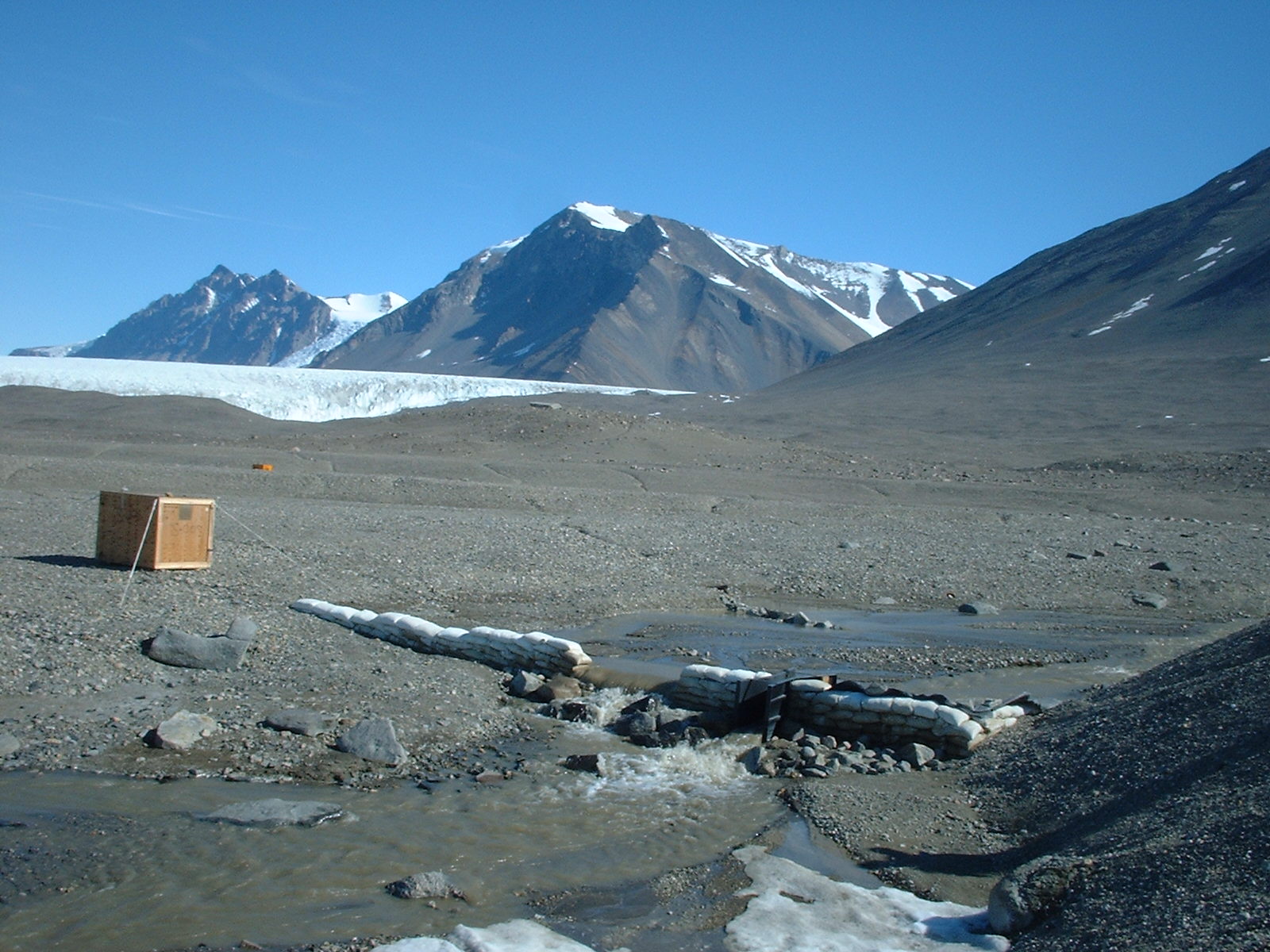Fire, Management, and the Global Carbon Cycle


Artist rendition of wildfire changing the future ecosystem of a forested area. Copyright Victor Leshyk
Overview
Fire, a natural ecological disturbance, has been suppressed in U.S. forests for much of the past century. This has prevented damage to property and protected timber resources, but has caused many forests to develop in an unnatural manner, resulting in dense stands of small trees that are now poised to fuel catastrophic fires when they do ignite. A warming and drying climate exacerbates this risk. How forests function has big impacts to the global carbon cycle; when trees grow they remove carbon dioxide from the atmosphere, and when they burn, some of that is returned to the atmosphere. Through direct field work and modeling efforts, we have demonstrated that combinations of forest thinning and controlled burning can reduce fire risk and increase forest carbon sequestration over the long term, although it necessarily causes near term carbon losses. Our field sites in diverse forests throughout the U.S. include military installations where land managers are challenged to balance habitat protection, fire risk, carbon sequestration, and mission readiness. Our research has promoted the idea that forest management activities that reduce fire risk and protect forest carbon should be creditable in emerging carbon markets.
Recent Publications
Martin KL, Hurteau MD, Hungate BA, Koch GW, North MP, 2015. Carbon tradeoffs of restoration and provision of endangered species habitat in a fire-maintained forest. Ecosystems 18:76-88.
Kerhoulas LP, Kolb TE, Koch GW, 2013. Tree size, stand density, and the source of water used across seasons by ponderosa pine in northern Arizona. Forest Ecology and Management, 289:425-433.
Kerhoulas LP, Kolb TE, Hurteau MD, Koch GW, 2013. Managing climate change adaptation in forests: a case study from the U.S. Southwest. Journal of Applied Ecology, 50:1311 – 1320.
Hurteau MD, Hungate BA, Koch GW, 2009. Accounting for risk in valuing forest carbon offsets. Carbon Balance and Management, 4:1, doi: 10.1186/1750-0680-4-1.
Hurteau MD, Koch GW, Hungate BA, 2008. Carbon protection and fire risk reduction: toward a full accounting of forest carbon offsets. Frontiers in Ecology and the Environment 6:doi:10.1890/070187.

